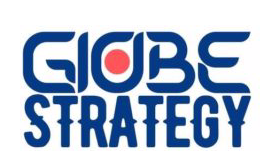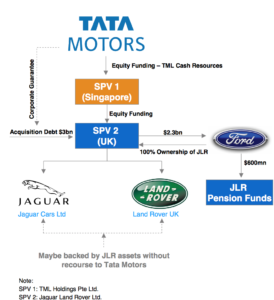The Association is the national authority on clay bricks and paver⊕
Author: globestrategy
World Coal Association
The World Coal Association is the global network for the coal industry. Formed of major international coal producers, it works to demonstrate and gain acceptance for the fundamental role coal plays in achieving a sustainable, lower carbon energy future.⊕
Doing Business in Kazakhstan 2017
Doing Business in Kazakhstan 2017 is the first report of the subnational Doing Business series in Kazakhstan. It measures business regulations and their enforcement in six regions (oblasts)—Aktobe, East Kazakhstan, Karagandy, Kostanay, Pavlodar and South Kazakhstan, each represented by its largest business city (Aktobe, Oskemen, Karagandy, Kostanay, Pavlodar and Shymkent)—as well as Almaty city and the capital city, Astana. Read more ⊕
How Do FTAs Affect Exporting Firms in Thailand?
Thailand—an outward-oriented regional production hub—is one of East Asia’s most active users of free trade agreements (FTAs) as an instrument of commercial policy. By December 2009, Thailand had 11 concluded FTAs, and more were either under negotiation or proposed. Thai trade negotiators have striven to secure market access via FTAs, but little is known on how FTAs actually affect exporting firms. A survey of 221 exporters in leading sectors forms the basis for the first systematic study of the business impact of FTAs in Thailand. Key findings are as follows: (i) 24.9% of respondents used Thai FTAs as of 2007–2008, and this figure seems set to rise; (ii) 45.9% of respondents said that FTAs had influenced their business plans; (iii) 26.2% of firms felt that dealing with multiple rules of origin adds to business costs, and this is estimated to be less than 1% of export sales; (iv) more than half the sample firms have consulted with government and business associations on FTAs; and (v) a significant demand existed for business development services to adjust to FTAs, particularly for small and medium enterprises (SMEs). The findings suggest that Thailand should refine its FTA strategy to take better advantage of regional trade agreements. The study concludes with specific recommendations to improve business awareness of FTAs, encourage greater utilization of FTA preferences, increase competitiveness of local firms, and mitigate the potential effect of multiple rules of origin.⊕
Global value chains
International production, trade and investments are increasingly organised within so-called global value chains (GVCs) where the different stages of the production process are located across different countries. Globalisation motivates companies to restructure their operations internationally through outsourcing and offshoring of activities according to the OECD. According to UNCTAD, the rise of the global value chains (GVCs) is reshaping the whole structure of worldwide trade flows. It is no longer true that all, or even the bulk of the value of a country’s exports can be assumed to be domestically produced. GVCs also contribute to the development of individual economies, creating jobs and value added country based activities. However, participating in global value chains does not automatically improve living standards and social conditions in a country (World Bank, 2017).A critique of mainstream and critical versions of Global Commodity Chain analysis has looked at the effect of nationalism and global value chains and the effect of low cost labour inputs on country competitiveness.
Institutional environments and governance do play an import role in GVC effectiveness.
The value added by each country in the production of goods and services that are consumed worldwide can be accessed using Trade in Value data from the OECD as well as country specific statistical profiles from the WTO.These statistical profiles show the value-added content in an economy’s exports, its participation in global value chains and the contribution of services to the value-added content of exports. They also cover trade in intermediate goods and services, trade facilitation and foreign direct investment. The OECD has produced a 2016 EDITION OF TIVA INDICATORS (1995-2011) that can accessed online as well as downloaded as a. XLS file.
The UNCTAD-Eora GVC Database – part of UNCTAD’s FDI-TNCs-GVC Information System – provides new perspectives on trade links between economies, on the distribution of value added, income and employment resulting from trade, on the investment-trade nexus and on how transnational corporations (TNCs), through equity and contractual modes, shape patterns of value added trade.
Useful Resources
Tracing the Value-added in Global Value Chains: Product-level Case Studies in China . Read it here
Implication of Global Value Chains for Trade, Investment, Development and Jobs. Read it here
Some global value indicators can be accessed here
Making Global Value Chains Work for Development is a world bank book
The governance of global value chains– an article that builds a theoretical framework to help explain governance patterns in global value chains
An overview of the key concepts and methodological tools in GVC can be accessed here and is a very introduction to the concepts
Global value chains in a changing world- its risks and effects in Emerging Markets can be accessed here
Glossary of business terms – A to Z
Handy definitions of financial and economic jargon – from libor and quantitave easing to black swans and dead cat bounces from the GUARDIAN⊕
North American Industry Classification System (NAICS)
Statistics of U.S. Businesses
Annual series that provides national and subnational data on the distribution of economic data by enterprise size and industry. SUSB covers most of the country’s economic activity. The series excludes data on nonemployer businesses, private households, railroads, agricultural production, and most government entities.⊕
State capture and rise of the unelected in a democracy
As a firm supporter of democracy, democratic institutional norms and values, I am also a believer in the ability of democratic governance structures to manage the relationship between the ruler and the ruled.
Cynically, I also believe that democratic governance systems are a part of the global business system. Therefore, unable to change the status quo of democratic governance, I accept business-government linkages, institutional varieties of corruption as well as the need for elected officials to manage business interests of the key financial supporters. But I do not at any point accept the capture of legitimate governance systems by any non-elected actors.
Last week (Feb 2017) as we alternated between the rants, tweets and retreat of the leader of the free world (President Trump, the southern Indian state of the Tamil Nadu played host to a political crisis of its own. An elected public official and head of government (OP Paneerselvan) was forced to resign due to a combination of threats, mass hysteria, and manipulation of state resources and the blatant use of criminal non-state actors by an unelected non-state actor (Ms Sasikala). Elected members of the legislative assembly were placed under house arrest and cajoled into supporting Sasikala as the new head of government.
The thought of this happening in a mature democracy like India has forced me to go back to the literature around the capture of the state.
The theoretical background behind the capture of the state has revolved around relationship with the firms, the rent generating advantages provided by public officials and the whole business of lobbying generated in the captured economy. In their paper, Hellman, Jones and Kaufmann (2000)[i] have sought to distinguish state capture with the other types of relationship between the firm and the state; lobbying or influence and administrative corruption.
State capture has been described as the ability of a firm to manage the transactions of governance either by paying elected officials and bureaucrats or by manipulating the rules of the game. Influence on the other hand has been the softer part of the corruption of governance with its linkage to the past, political dynasties, family ties and legacies of both present and past business networks.
In the present context, the capture of the state of Tamil Nadu by an individual who holds no public office and stands accused of corruption, is a serious threat to the legitimacy of the Indian state and its governance attributes. Should Sasikala be invited to form the next government, the moral high ground of democracy and its ability to manage a balance of power between those in power and those who allow them to remain in power will be destroyed. We have already witnessed some erosion of this high ground in recent times across several geographies.
For the central government in India, managing this crisis will be the litmus test for the whole nation as it projects its democratic credentials in other emerging and transition economies.
[i] Hellman, J.S., Jones, G. and Kaufmann, D., 2000. Seize the state, seize the day: State capture, corruption and influence in transition.

